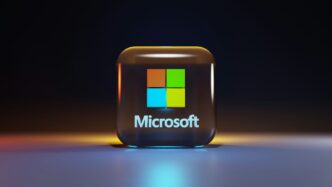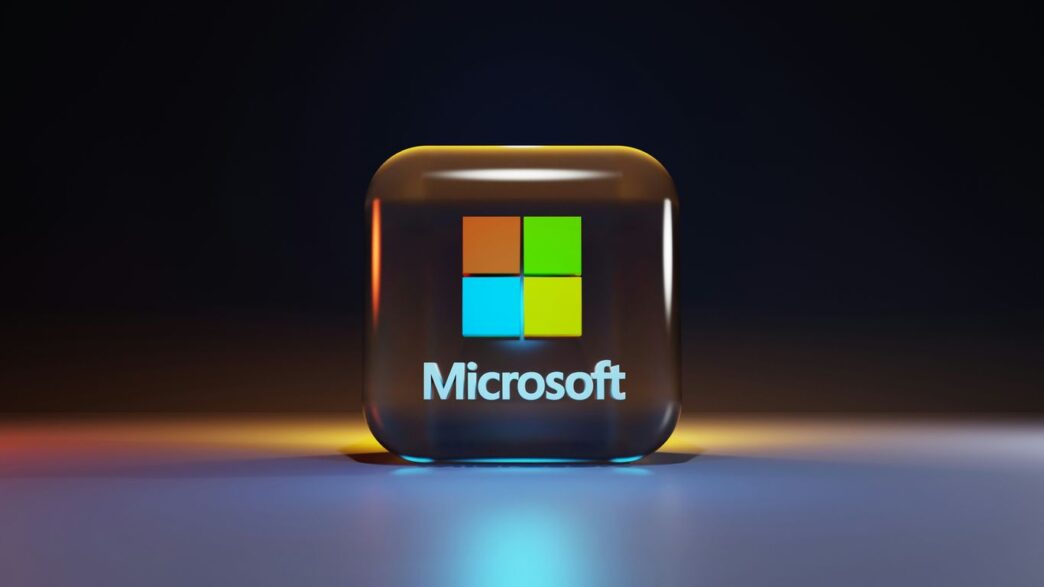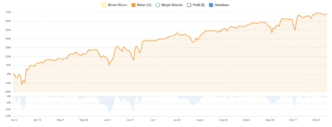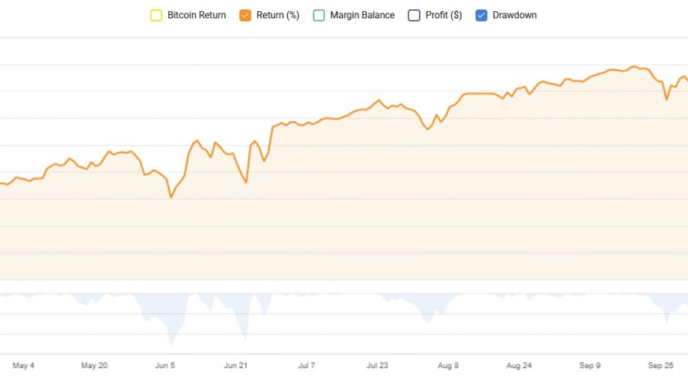You hear a lot about FAANG stocks these days – you know, Facebook, Amazon, Apple, Netflix, and Google. They’re the big names everyone talks about when discussing tech giants. But then there’s Microsoft, a company that’s been around forever and is still a huge player. So, why isn’t Microsoft usually lumped in with the FAANG crowd? It turns out there are some pretty good reasons, mostly tied to when and why the FAANG acronym even started. Let’s take a look.
Key Takeaways
- The FAANG acronym was created in the early 2010s to highlight fast-growing, consumer-focused tech companies that were disrupting industries like social media, e-commerce, and streaming.
- Microsoft, founded much earlier, was already an established enterprise software giant and wasn’t experiencing the same kind of rapid, disruptive growth that defined the FAANG companies at that specific time.
- FAANG companies typically focused on specific consumer markets, whereas Microsoft has a much broader business model, including significant enterprise solutions, cloud services, and gaming.
- From a stock market perspective, FAANG was seen as representing high-growth, consumer discretionary stocks, while Microsoft was often categorized more traditionally within the technology and enterprise services sector.
- Despite not being part of the original FAANG acronym, Microsoft remains a dominant force in technology through its leadership in enterprise software, cloud computing (Azure), gaming (Xbox), and AI development.
Understanding The FAANG Acronym

Origin and Initial Formation
You’ve probably heard the term FAANG thrown around a lot when people talk about big tech companies. It’s a catchy acronym, right? It stands for Facebook (which is now Meta), Amazon, Apple, Netflix, and Google (now Alphabet). This group became a shorthand for some of the most influential and high-performing tech stocks in the market. The whole thing really kicked off in the mid-2010s. Back then, it was actually just called FANG, and it included Facebook, Amazon, Netflix, and Google. These companies were really shaking things up, showing massive growth and changing how we interact with technology and each other.
The Addition of Apple
As time went on, Apple just kept getting bigger and more dominant. With its groundbreaking products and strong financial performance, it was hard to ignore. So, it made sense to add Apple to the mix, expanding FANG to FAANG. This change really cemented the acronym as a way to talk about the top tier of tech giants that were driving market trends and investor interest. It was a reflection of how these specific companies were shaping the digital landscape.
FAANG Explained: A Stock Market Acronym
So, what exactly does FAANG represent? At its core, it’s a stock market term. It was coined to highlight a specific set of technology companies that were experiencing rapid growth and had a significant impact on the market. Think about it: these companies were revolutionizing different areas:
- Meta (Facebook): Changing how we connect and share online.
- Amazon: Transforming online shopping and cloud computing.
- Apple: Redefining personal technology and mobile devices.
- Netflix: Disrupting the entertainment industry with streaming.
- Alphabet (Google): Dominating online search and digital advertising.
These companies weren’t just successful; they were seen as the future, driving innovation and capturing the public’s imagination. Their stock performance was often stellar, making them darlings of investors looking for growth. You can see how these major tech companies really stood out from the crowd.
Why Microsoft Isn’t Part of The Original FAANG
It’s a question that pops up pretty often when people talk about the big tech players: why isn’t Microsoft, a company that’s been around forever and is still a massive force, included in the FAANG acronym? It seems a bit odd, right? Well, it mostly comes down to when and why the acronym was even created in the first place.
Timing of The Acronym’s Origin
Think back to the early to mid-2010s. That’s when the term FAANG really started gaining traction. It was coined by a stock market analyst, Jim Cramer, to highlight a specific group of companies that were absolutely exploding in terms of growth and market impact at that exact moment. These were the companies that were changing how we interacted online, shopped, and consumed media. Microsoft, while already a giant, was in a different phase. It was more of a steady, established player, not the flashy, rapidly ascending disruptor that the FAANG companies represented back then. Its stock wasn’t seeing that same kind of meteoric rise that defined the FAANG stocks during that particular window.
Microsoft’s Legacy Status
This ties into the timing thing, but it’s also about perception. Microsoft, founded way back in 1975, is often seen as part of the ‘old guard’ of tech. You know, like IBM or Oracle. When FAANG came along, it was meant to represent a new wave of tech innovation – the ‘new school’ companies that were really shaking things up in social media, e-commerce, and streaming. Microsoft, with its decades-long history in operating systems and business software, just felt more traditional by comparison. It had already cemented its place, and the FAANG acronym was more about capturing that next wave of disruptive growth.
Public Perception: Traditional vs. New School
So, you had these FAANG companies, which felt very ‘now’ and focused on changing daily life through consumer tech. Facebook was changing how we connect, Amazon how we shop, Netflix how we watch, and Google how we find information. Apple, of course, revolutionized personal devices. Microsoft, on the other hand, was deeply embedded in businesses with Windows and Office, and while it had consumer products, its core identity in the public eye was often tied to enterprise solutions and a more established, less ‘disruptive’ image compared to the newer players. It was seen as reliable, sure, but not necessarily the cutting edge of new trends in the way FAANG companies were perceived at the time the acronym was born.
Divergent Business Models And Industry Focus
When the FAANG acronym first started making waves, it was really about a specific kind of tech company. Think social media, online shopping, streaming services, and search engines. These are all pretty direct-to-consumer plays, right? You’re scrolling through Facebook, buying something on Amazon, watching Netflix, or Googling something. These companies built their empires on capturing the attention and wallets of everyday people.
Microsoft, on the other hand, has always had a bit of a different game plan. Sure, they have consumer products like Windows and Xbox, but a huge chunk of their business has always been about serving other businesses. We’re talking about the software that runs offices, the cloud services that power companies’ operations, and tools that help employees get work done. It’s a more business-to-business (B2B) focus, even though those business tools eventually impact us as consumers when we interact with companies that use them.
FAANG’s Focus on Consumer-Facing Technologies
The companies that make up FAANG really hit it big by changing how we interact with technology in our daily lives. They created platforms and services that became almost indispensable for many people.
- Social Media & Communication: Platforms like Facebook (now Meta) became central hubs for connecting with friends and family, sharing updates, and consuming content.
- E-commerce: Amazon revolutionized online shopping, making it incredibly convenient to buy almost anything from your couch.
- Entertainment: Netflix changed how we watch movies and TV shows, moving us from scheduled broadcasts to on-demand streaming.
- Information Access: Google became the go-to for finding information on the internet, shaping how we search for and discover knowledge.
Microsoft’s Diversified Portfolio
Microsoft’s approach has always been broader. They didn’t just pick one lane; they built a whole highway system.
- Operating Systems: Windows has been the backbone of personal computing for decades.
- Productivity Software: Office (Word, Excel, PowerPoint) is a standard in workplaces and schools worldwide.
- Cloud Computing: Azure is a major player in providing cloud infrastructure and services to businesses.
- Gaming: The Xbox brand has a significant presence in the video game industry.
- Hardware: Products like the Surface line of devices offer a blend of hardware and software.
Enterprise Solutions Versus Niche Markets
This difference in focus is pretty significant. FAANG companies often carved out very specific, massive niches. They became dominant in their chosen areas. Microsoft, however, plays in many different sandboxes. While FAANG was busy becoming the king of consumer internet experiences, Microsoft was building the foundational software and services that many of those same companies, and countless others, relied on to operate. It’s like comparing a specialist doctor who is the absolute best in one rare procedure to a general practitioner who can handle a wide range of common health issues effectively. Both are important, but they serve different needs and are often viewed differently because of it.
Stock Market Categorization Differences
When the FAANG acronym first started making waves, it was really about pinpointing specific kinds of companies that were absolutely exploding in the stock market. Think of it as a snapshot of the hottest trends in tech investing at that particular moment. These companies were often seen as the new kids on the block, shaking things up and showing massive growth potential, especially with consumers.
FAANG as Growth-Oriented Stocks
FAANG really became shorthand for companies that were all about rapid expansion and capturing new markets, particularly those that touched everyday people. We’re talking about social media, online shopping, streaming entertainment, and search engines. These were the businesses that investors believed would continue to grow at a breakneck pace, changing how we live and interact. They were generally classified as "growth stocks," meaning their value was expected to increase significantly over time, often reinvesting profits back into the business to fuel that growth rather than paying out dividends.
Microsoft’s Classification in Technology and Enterprise
Microsoft, on the other hand, has always had a bit of a different vibe. While it’s undeniably a tech giant, its core business for a long time was deeply rooted in enterprise solutions. Think Windows operating systems and the Office suite of productivity tools. These are incredibly important, of course, but they cater more to businesses and professionals than the direct-to-consumer, paradigm-shifting services that FAANG companies were known for. Because of this, Microsoft often got lumped into broader "technology" or "enterprise software" categories, which didn’t quite fit the specific, consumer-focused growth narrative that FAANG represented. It was seen as more established, perhaps less of a pure growth play in the way the FAANG companies were perceived in the early 2010s.
NASDAQ Dominance Beyond Acronyms
It’s important to remember that these acronyms are just labels, and they don’t tell the whole story. Microsoft is a massive player on the NASDAQ and a huge component of indices like the S&P 500. Its market capitalization is enormous, often rivaling or exceeding that of some FAANG members. However, FAANG was created to highlight a specific type of growth and market disruption that was happening at the time, driven by companies that were fundamentally changing consumer behavior. Microsoft’s influence, while immense, was built on a different foundation and followed a different trajectory, making it a distinct entity even within the same stock exchange.
Microsoft’s Enduring Influence In Technology
Even though Microsoft isn’t part of the original FAANG acronym, its impact on the technology world is massive. It’s not just about being old; it’s about consistently being a major force. Think about it, Microsoft has been around for ages, way before FAANG even became a thing. They basically set up shop in the 70s and have been innovating ever since.
Dominance in Enterprise Leadership
Microsoft really shines when it comes to businesses. They’ve got the Windows operating system, which is pretty much everywhere, and the Office suite – Word, Excel, PowerPoint – you know the drill. These tools are the backbone for so many companies. Plus, their cloud service, Azure, is a huge player, competing directly with Amazon’s AWS. It’s not just about selling software anymore; it’s about providing the whole infrastructure for businesses to run.
Significant Presence in The Gaming Industry
And then there’s gaming. With the Xbox console, Microsoft is a giant in the entertainment space. They’ve also been buying up big game studios, like Bethesda and Activision Blizzard. This move shows they’re serious about owning a big chunk of the gaming market, which is a massive industry on its own. It’s a different kind of influence than what FAANG companies typically represent, but no less powerful.
Key Player in Cloud Computing
We touched on Azure already, but it’s worth repeating. Cloud computing is the future, and Microsoft is right there. Azure is one of the top cloud platforms globally. Businesses are moving their data and operations to the cloud, and Azure is a go-to choice for many. This puts Microsoft in a critical position, powering a lot of the digital world behind the scenes.
Investments in AI and Emerging Technologies
Microsoft isn’t just resting on its laurels. They’re putting serious money into artificial intelligence. Their partnership with OpenAI, the folks behind ChatGPT, is a big deal. This shows they’re looking ahead, trying to shape what comes next in technology. It’s this constant drive to be at the cutting edge that keeps them relevant, even if they don’t fit neatly into a catchy acronym.
The Evolving Landscape of Tech Acronyms
Arguments for Expanding FAANG
The tech world moves fast, and sometimes, acronyms just can’t keep up. FAANG, while catchy, was really born out of a specific moment in time, focusing on companies that were really shaking things up in consumer tech and stock markets back in the mid-2010s. But as we’ve seen, Microsoft has been a powerhouse for ages, and its influence has only grown, especially in areas like cloud computing with Azure and enterprise solutions. Some folks, like former Twitter CEO Jack Dorsey, have even suggested new acronyms like MAANG (adding Microsoft) or MAMAA (Microsoft, Alphabet, Meta, Amazon, and Apple) to better reflect the current giants. It makes sense, right? These companies are all massive and shape so much of our digital lives. It’s a sign that the tech landscape is always shifting, and our labels need to shift with it.
Emergence of MAANG and MAMAA
Because FAANG felt a bit dated to some, new acronyms started popping up. You’ll hear about MAANG, which simply swaps in Microsoft for Netflix, acknowledging its huge presence. Then there’s MAMAA, which adds Meta (formerly Facebook) and Microsoft into the mix. It shows how analysts and investors are trying to capture the most influential tech players of today. It’s like trying to keep a photo album updated – you gotta add the new family members!
Acronyms as Shorthand for Trends
Ultimately, these acronyms are just shorthand. FAANG became popular because it quickly described a set of companies that were driving specific trends – think social media, e-commerce, streaming, and mobile. They were seen as the hot, growth-oriented stocks. But technology isn’t just about consumer gadgets and apps. Microsoft, for instance, has been a bedrock for businesses for decades with its software and is now a major force in cloud services. So, while FAANG might stick around in our memories, new acronyms are emerging to paint a more complete picture of the Big Tech landscape. It’s all about trying to make sense of who’s leading the charge in different parts of the tech world.
So, What’s the Takeaway?
Ultimately, Microsoft not being in the FAANG acronym isn’t a knock against its massive success. It really just comes down to when and why the term FAANG was created. It was meant to capture a specific wave of fast-growing, consumer-focused tech companies from the early 2010s. Microsoft, already a huge player with a different focus on enterprise and a longer history, just didn’t fit that particular mold. But let’s be clear: Microsoft is still a giant. Whether it’s Windows on your computer, Azure in the cloud, or the latest Xbox game, its influence is everywhere. The tech world keeps changing, and while acronyms can be fun, they don’t always tell the whole story about who’s really shaping things.
Frequently Asked Questions
What does FAANG stand for?
FAANG is a catchy name for five big technology companies: Facebook (which is now called Meta), Amazon, Apple, Netflix, and Google (which is now called Alphabet). These companies were popular because they were growing super fast and changing how we use technology.
Why isn’t Microsoft included in FAANG?
When the FAANG name was first created, it was for companies that were new and growing really quickly. Microsoft was already a big, established company back then. Think of it like this: FAANG was for the rising stars, and Microsoft was already a superstar who had been around for a while.
Did Microsoft do something wrong to not be in FAANG?
Not at all! Microsoft is still a huge and very important tech company. It’s just that the FAANG name was created to highlight a specific type of fast-growing, consumer-focused tech companies from a certain time. Microsoft has a different kind of business, focusing a lot on software for businesses and other areas.
What kind of things does Microsoft do?
Microsoft makes a lot of different things! You probably know Windows, which runs most computers, and Office, which has Word and Excel. But they also have the Xbox for gaming, a big cloud service called Azure, and they’re investing a lot in new stuff like artificial intelligence.
Are there other names for these big tech companies?
Yes, people have come up with other names! Since Microsoft is so important, some people use ‘MAANG’ (adding Microsoft) or even ‘MAMAA’ (Microsoft, Apple, Meta, Amazon, Alphabet). These new names try to include more of the biggest tech players.
Is Microsoft still as important as FAANG companies?
Absolutely! Even though Microsoft isn’t in the original FAANG group, it’s still one of the most powerful and influential companies in the world. It’s a leader in many areas, like business software and cloud computing, and continues to be a major force in technology.














